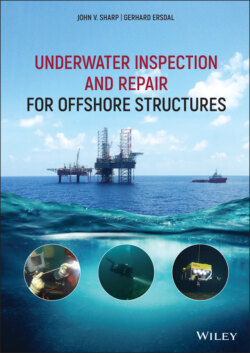Читать книгу Underwater Inspection and Repair for Offshore Structures - Gerhard Ersdal - Страница 33
2.3.5 ISO 19901‐9
ОглавлениеThis relatively new standard (at the time of writing) focusses on structural integrity management (ISO 2019a) based on other standards such as ISO 19002 (ISO 2007) and NORSOK N‐005 (Standard Norge 2017b) and N‐006 (Standard Norge 2015). It includes a section on developing an inspection strategy (plan) to be prepared from the engineering evaluation which should determine the likely existence and extent of any deterioration and damage. The inspection strategy should periodically be reviewed and updated throughout the service life based on new data and information being received from, for example inspection reports and structural evaluation and assessments. The types of inspection proposed follow that in other standards (e.g. API RP‐2A) with both scheduled and unscheduled inspections. The scope of work should include standard inspection methods such as GVI, CVI, FMD and NDE. Selection of appropriate inspection methods should be determined by qualified personnel based on knowledge and availability of the different methods. Inspection intervals for periodic inspections are selected according to the structural integrity strategy using a risk‐based approach. However, if an operator does not want to use a risk‐based approach, an alternative is a consequence‐based method developed from world‐wide experience which provides pre‐determined inspection intervals.
The ISO standard also addresses inspection methods and identifies specific areas for inspection, including underwater cathodic protection, coatings and air gap. The survey should include dimensional measurements to measure such quantities as damage size and geometry, member out‐of‐straightness, crack length and depth and depth of corrosion. Focussed inspection is proposed for several failure modes and degradation mechanisms such as impact damage from ships, debris and dropped objects, fatigue failure and damage to protective devices such as riser guards. The standard notes that structures are usually designed with a corrosion allowance in the splash zone, which should be monitored.
At the time of writing, this standard is in the process of being updated as a result of concerns expressed about its approach, particularly on the assessment part of the standard. In addition, structural integrity management is a rapidly evolving field given the pressures of the extending life of many platforms and the subsequent cost of inspection and repair.
